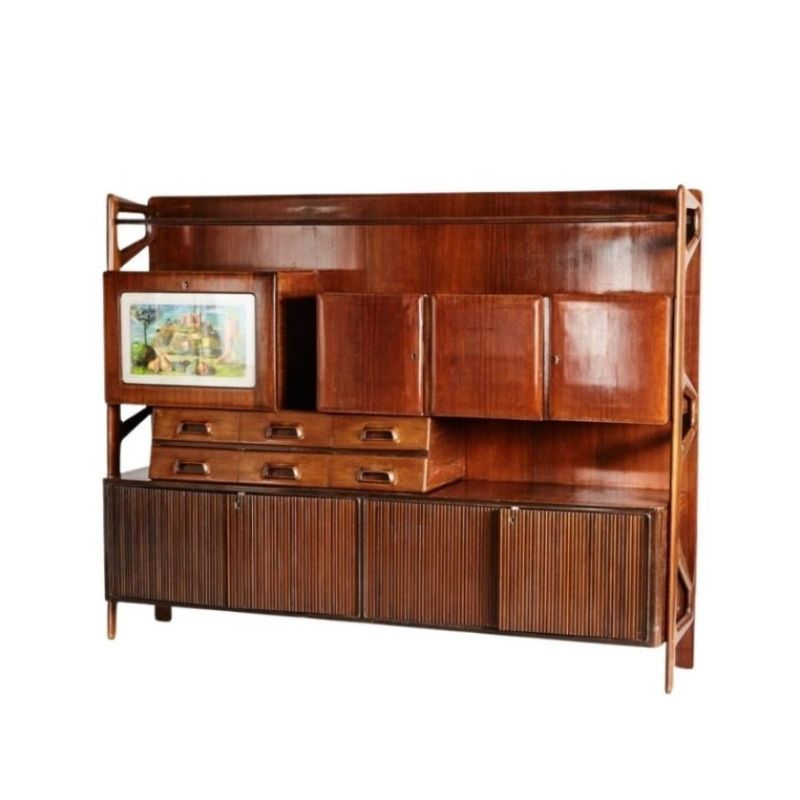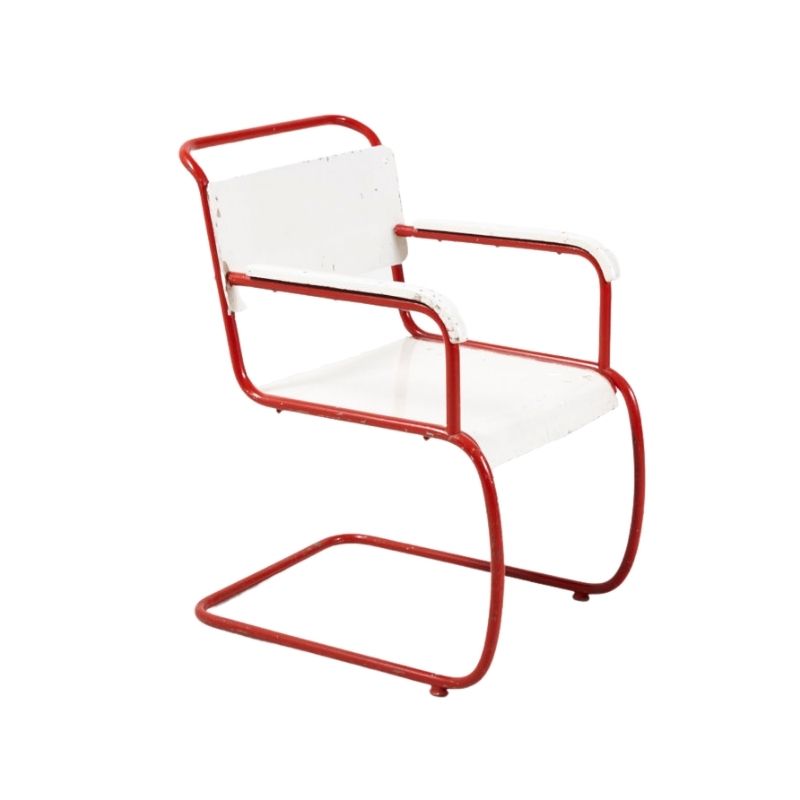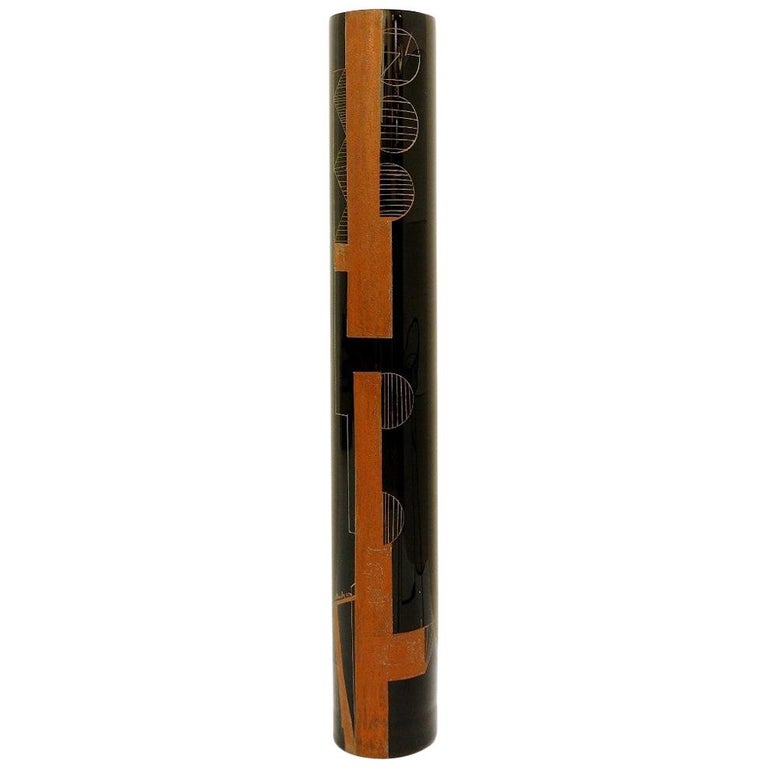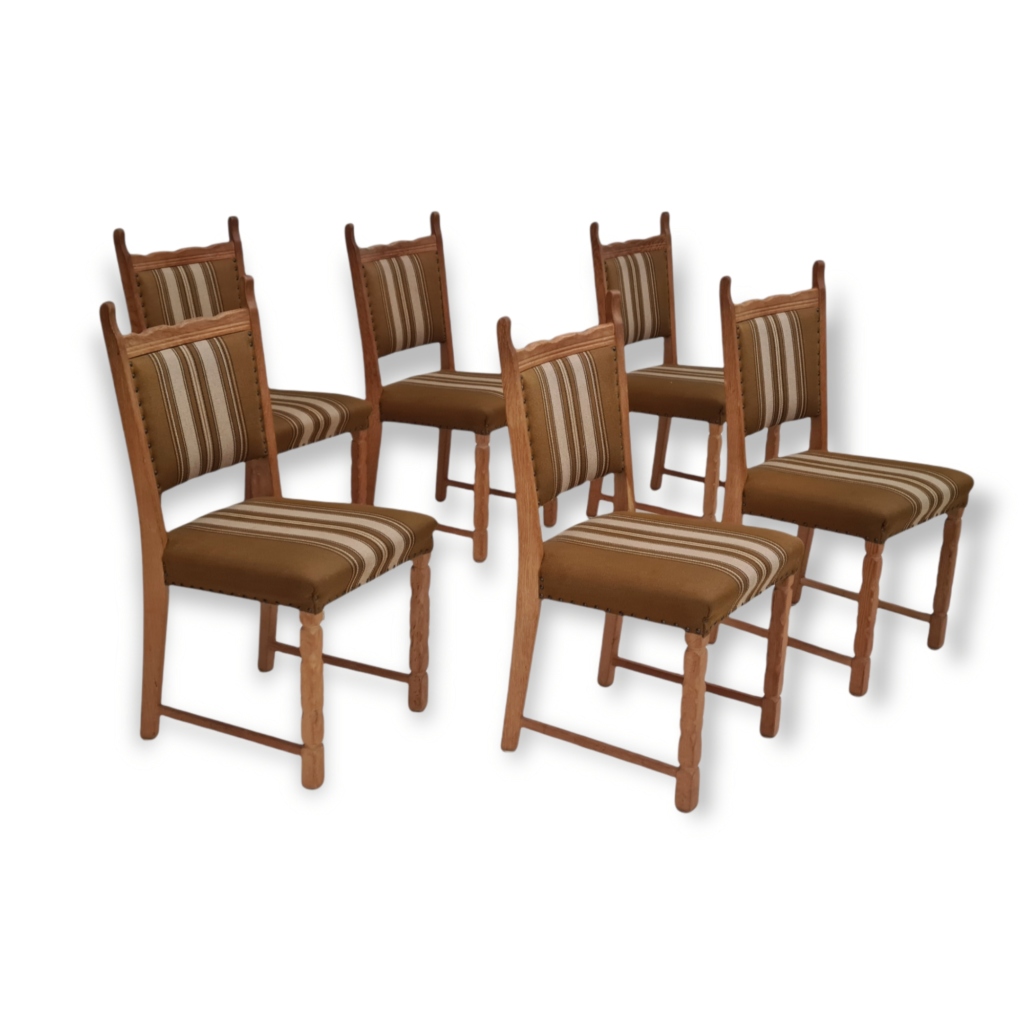Can you get any close ups of the wood? Looks like beech from this distance, but could be teak I suppose.
I think we are going to need better pictures if there is any chance of figuring this out. Picture of th bottom of the chair, any pictures that show how the chair is assembled, all will help. Can you still see the original upholstery, or are you aware of what the original upholstery looked like?
https://www.designaddict.com/cdn/farfuture/DYBRSYgNKzptdv349Vt2mVFkRWGfk_...
That's the photo in the original size (which I got to by double clicking on the image and selecting "open image in new window", then zooming in). Looks like a tinted lacquer on the frame, unless those light scuffs are latex wall paint, maybe. But the wood kind of has that obscured grain look that you get when the finish has pigment in it.
There are some Norwegian and maybe some German lounge chairs that have an upholstered seat with those particular curves, which I think are usually due to sinuous springs, but tinted lacquer is not so much a Norwegian thing. At least I don't think so. I would lean a bit towards UK production but more pics would help.
Thanks Spanky, I never dove in deep enough to figure out how to zoom in on photos posted here.
Agree, if it is toner, or pigmented lacquer, it points away from Scandinavia, and towards the US, UK, etc. I have seen toner used on Scandinavian pieces, but it seems like this was a rare occurrence. My Henning Kjaernulf walnut dinning chairs were toned, but I have seen few others. The toning was done to cover-up/even-out inferior wood species and grain characteristics, typically.
In any case, an even more close up will certainly help make the determination definitively.
The "open image in new tab" is of benefit only when the original photo was bigger than whatever the limit is on photos in the thread (500 pixels wide, maybe?) Lots of times people upload smallish photos so that don't look any different when outside the thread. But I always check!
I had a Kofod-Larsen chair with that walnut color lacquer on it, which had turned green in places. The chair was actually two species of wood (can't remember what at this point) AND the back spindles were varnished whereas the rest was lacquered. It hadn't been redone, either. Weird.
Yeah, same with my Kjaernulf chairs, brown toner, to even out the walnut color, that turned green with age. I have a post on it a while back when I was trying to figure out the wood species.
Turns out they were European walnut. The chairs have a wide array of dark streaking in the grain, and some members are dark walnut, others are lighter walnut. I understand why they did it, to even out the tone of the chair as a whole, but I really prefer the wild grain characteristics of the chairs now they are refinished.
Most of the toner-use I have seen, is on American products, to make lighter woods like beech, ash, elm look like black walnut. I am not saying it wasn't done in Scandinavia, we both have examples that prove this isn't the case, it just was not often done. Typically Danish, Norwegian, Swedish, Finnish pieces showcased the natural beauty of the wood, and covering it up would be diametrically opposed to one of their primary aesthetic goals. Furthermore, they just did not use inferior woods; visible pieces were always teak, rosewood, walnut, oak, afromosia, birch (in Finnish designs) and rarely mahogany. Beech was also used extensively, but kept mainly to structural members and as the base under veneer.
Anyways, hopefully the OP can get us some more info to go off of.
If you need any help, please contact us at – info@designaddict.com









